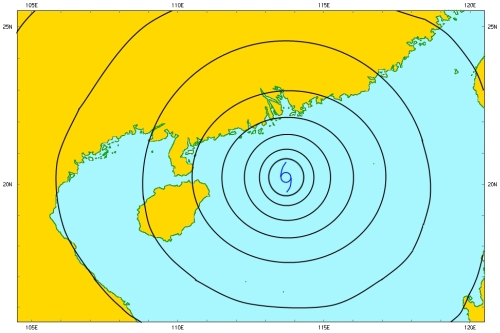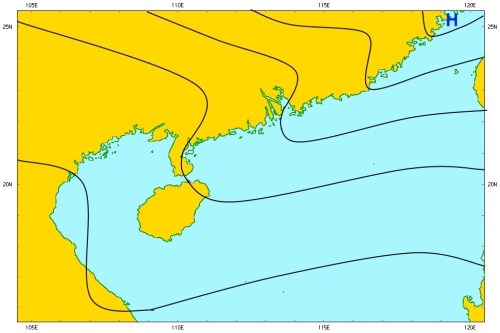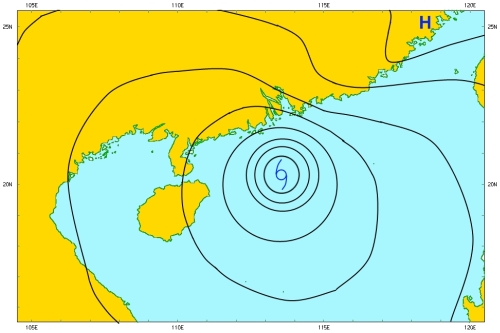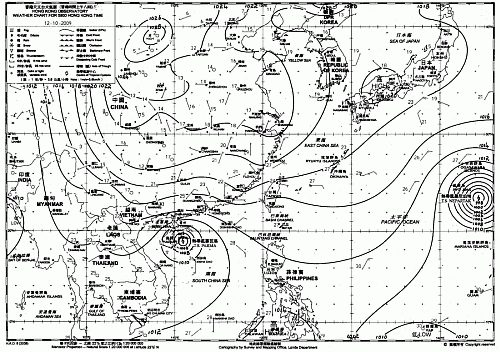Combined Effect of Tropical Cyclone and Northeast Monsoon
Have you come across the phase "combined effect of a tropical cyclone and the northeast monsoon"? This phase is sometimes used in weather bulletins or tropical cyclone warning bulletins issued by the Hong Kong Observatory. To help you better understand the phase, its meaning is explained here.
A tropical cyclone can give rise to, among other things, strong winds. Likewise, strong wind is one of the effects of northeast monsoon. The combined effect of a tropical cyclone and the northeast monsoon to a place means the effect experienced by this place when it is affected by both the tropical cyclone and the northeast monsoon simultaneously. One of the combined effects is stronger winds.
In this article, the concept of isobar is used to explain the combined effect. The meaning of "isobar" is explained in a previous article. Suffice to recap that one can deduce wind speed from isobars in weather charts. Everything else being equal, winds tend to blow harder (gentler) where isobars are closer together (further apart). Technically, the distance apart between two isobars depicts the pressure gradient of the areas around. The pressure gradient is tight (slack) when the isobars are closer together (further apart). Tighter pressure gradient results in stronger winds.
When a tropical cyclone affects a place, the weather map shows that isobars around the place are packed together with very tight pressure gradient (Figure 1). Similarly, a northeast monsoon will also bring tight pressure gradient to a place (Figure 2). When the place is being affected by both a tropical cyclone and the northeast monsoon, the pressure gradient around the place as revealed by the small distance between isobars are indeed tight (Figure 3).
The daily weather chart of 12 October 2009 (Figure 4) shows a good example of the combined effect of Tropical Storm Parma and the northeast monsoon to Hong Kong and its vicinity. Under the combined effect of the northeast monsoon and Parma, Hong Kong was windy from 11 to 14 October. The Strong Monsoon Signal was in force for 37 hours 20 minutes from 0250H, 11 October to 1610H, 12 October.

Fig.1 A tropical cyclone affecting Hong Kong

Fig.2 A northeast monsoon affecting Hong Kong

Fig.3 A tropical cyclone and the northeast monsoon affecting Hong Kong at the same time

Fig.4 Both Tropical Storm Parma and the northeast monsoon affecting Hong Kong on 12 October 2009